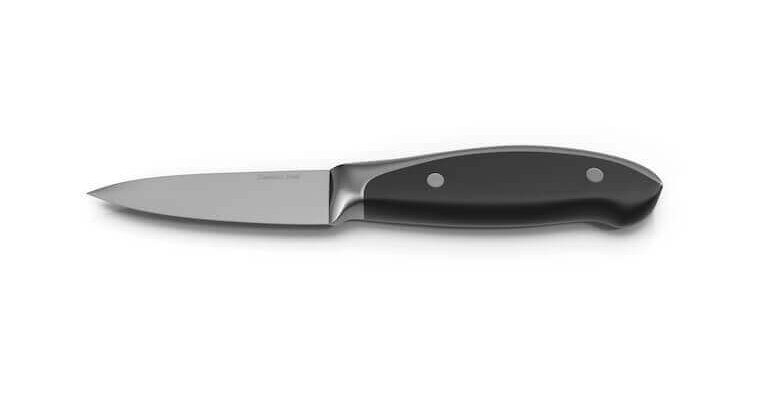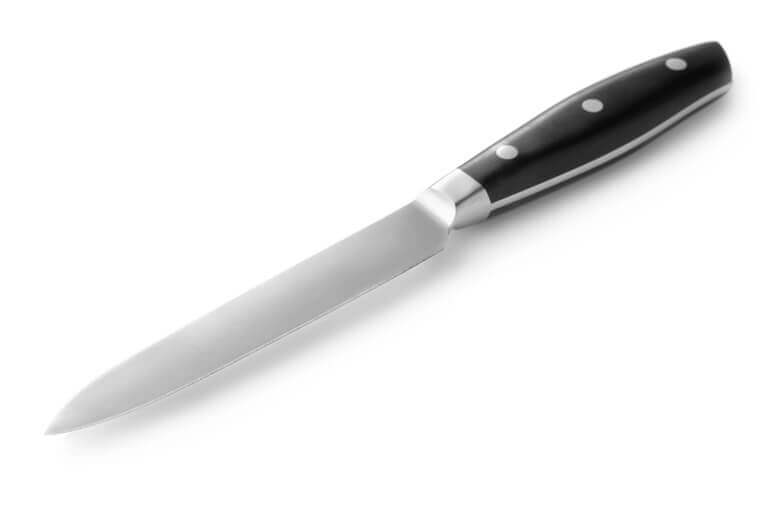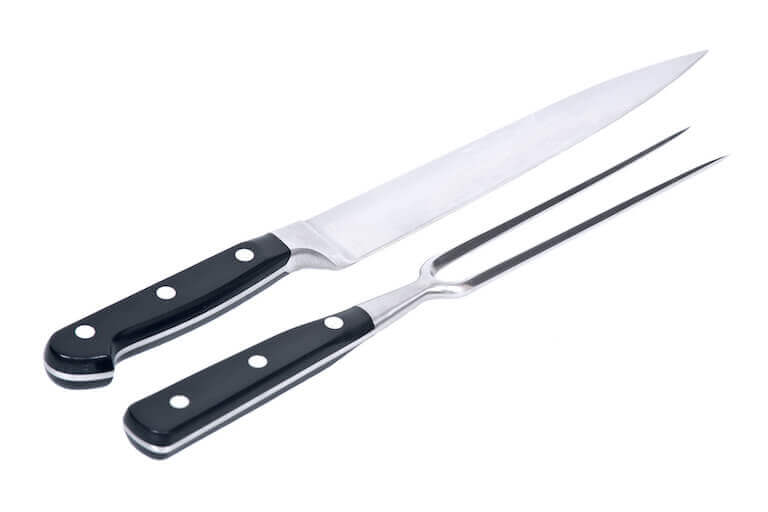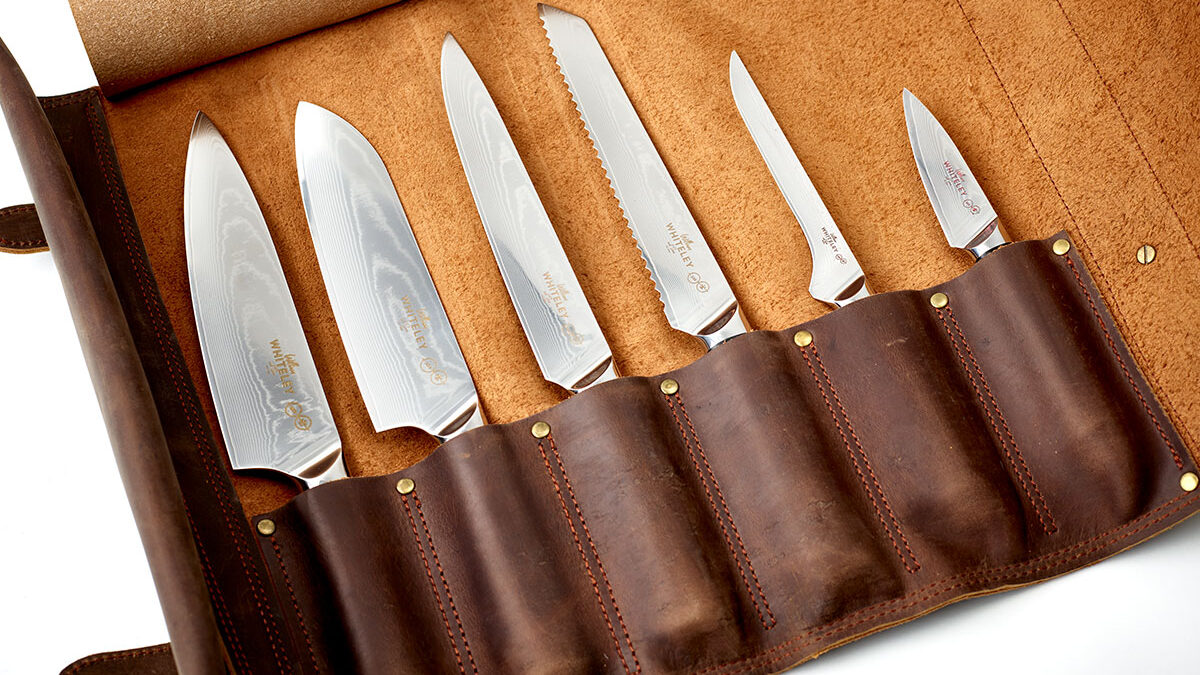While you may think a knife is just something that can slice through meats and veggies, don’t tell that to a chef. A chef’s knife kit is akin to a painter’s brush collection: while any knife can cut and any paintbrush can apply paint, selecting the right tool for the job can help a culinary professional achieve the results they’re looking for.
With that in mind, remember that not all knives are created equal. Using the right knife for the right job doesn’t just improve the quality of your cuts, it’s also a safety measure. If you understand which knives to use for different tasks, you may be able to prevent injuries and save yourself time and effort in the kitchen.
Chef’s Knife

As its name suggests, the chef’s knife is one of the most frequently used and versatile tools in the kitchen. Chef’s knives are typically between eight and ten inches, although they can be as short as six inches and as long as 14 inches. You can probably use your chef’s knife for most of your slicing during food prep, and in many ways, it can be the most important tool you use.
The more comfortable you feel with the weight and balance, the more quickly you’ll be able to slice, dice, and julienne vegetables during prep for a busy meal service. Therefore it’s important to find a knife that gives you a smooth and fast rhythm as you’re cutting.
Paring Knife

A paring knife is basically a mini chef’s knife with a small blade that offers greater versatility and precision. While the chef’s knife works for cutting hard vegetables, paring knives are great for peeling apples and potatoes, mincing small amounts of garlic and onions, and coring tomatoes.
The blade will be no longer than 3.5 inches, so it’s ideal for detail work like creating a garnish. A paring knife is useful when you’re working with small or tender vegetables and fruit – like ginger, strawberries, garlic, and shallots – but isn’t suited for harder vegetables – such as carrots, beets, and squash.
Remember that you never want to apply force with a paring knife – so if you find yourself flexing your muscle, swap it out for a heavier blade to avoid injury.
Utility Knife

This truly is a utilitarian knife – it does multi-duty. If you want the heft of a chef’s knife with a bit of the precision of a paring knife, the utility knife is the tool to call on. The blade is longer than a paring knife and narrower than a chef’s knife. A utility knife is generally six inches long and works well for slicing fruit, tender pieces of meat, or sandwiches. As the “knife of all trades,” it’s a handy go-to for the everyday chef.
Damascus knives
Ace of Blades, Artisan Made damascus knives, Damascus Blades. Superior Quality Damascus Knives made of Damascus Steel. Available in Fixed Blade, Folding Knives & Pocket Knives, Hunting Knives, Straight Razors. High Quality Damascus Steel Chef Knives. View Our Damascus Steel Blades
Boning Knife

Long, thin, and strong, this knife is used to remove meat from the bone. Its thinness allows you to move with the curves and bends of the bone and separate the meat effectively, creating as little food waste as possible. When using a boning knife, it’s important that you do not attempt to cut through bones.
There are two versions of a boning knife – flexible and stiff – and both have a specific purpose. If you look at a chef’s knife kit, you’ll likely find both in their collection. Both types of boning knives have five to six-inch long narrow blades that come to a very sharp point. This type of flexible blade is suitable for removing skin and bones from poultry and fish, while a stiff blade knife allows you to use greater force when you’re working with thick cuts of meat like beef and pork.
Carving Knife

When it comes time to achieve a clean, precise cut on a turkey, ham, or roast, the carving knife is ideal. A good carving knife is usually fifteen inches long. Its thin blade features an indentation that stops food from sticking to the surface. Whether you’re slicing a sirloin roast into paper-thin slices or a pork tenderloin into thick, juicy portions, a carving knife is the perfect tool.


